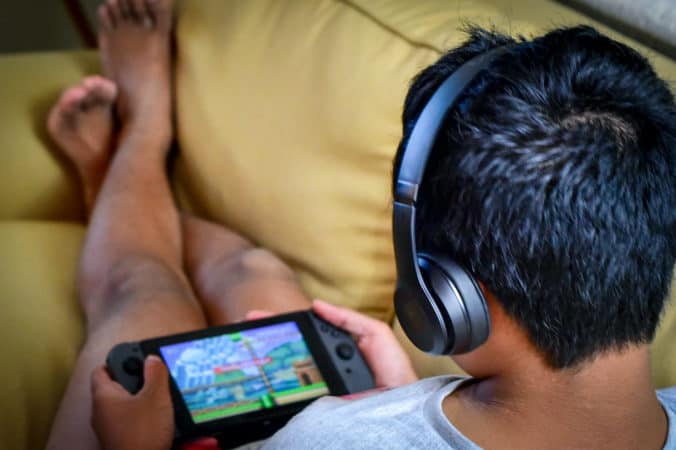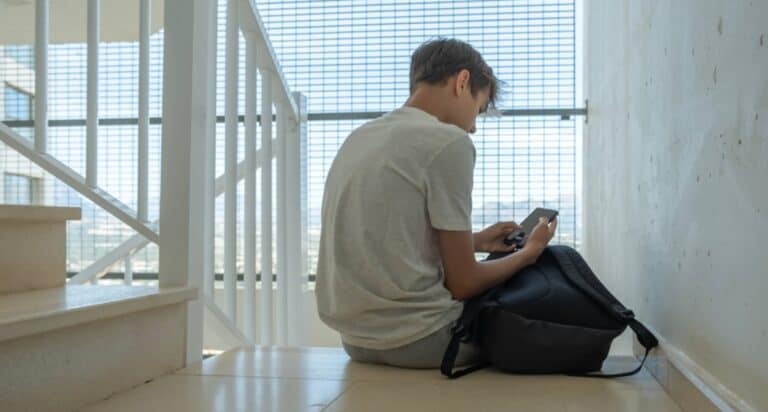“How long have you been playing today?
Have you been outside?
Did you take a break?”
Those were the questions I would launch at my then-6th grader when he first started playing Fortnite two years ago.
“No, you may not spend real money on skins. Your skin looks just fine to me! You need a new battle pass?
“Didn’t you just get a battle pass? What IS a battle pass?”
Those conversations were on a constant loop for the several months
I hated Fortnite.
“Why does it have to be so violent?
Does he really have to talk about a kill count?”

I worried that my son was playing too much Fortnite
I would lament to my husband. He was still a gamer himself, so he could empathize with my son a bit more. He tried to explain the video game terminology to me while showing me other games that were much more violent. He also reminded me that our son still had great grades and spent hours playing basketball. A socially-adept man with a successful career, my husband did offer proof that video games can’t be all bad.
But I’m a worrier by nature, and this particular worry possessed me.
I researched video game addiction, texted other moms for advice, posted in Facebook parenting forums, and thought longingly of the Mario Cart days. Was he playing too long? Would this turn into real-life violence?
Mostly, though, I worried about his social skills. Like me, he prefers staying home to big social gatherings, but he was turning into a hermit-like homebody.
At one point, I even let him attempt to teach me to play, thinking maybe that would help me understand the appeal. After thirty minutes of trying to get my avatar moving in a straight line, I gave up. “I just don’t think you’re meant for video games,” he offered encouragingly.
Over the next two years, the battle continued, both on his screen and in our home. While his older brother met up with friends at the mall or invited basketball friends over after school, my video-game-loving son continued on his quest to dominate Fortnite. He added other games to his repertoire, but Fortnite was never pushed aside for long. I coaxed and poked, prodded and bribed to get him out of the house.
“Why don’t you ever want to have friends over?
Are you SURE you don’t want to go to the school dance?” I badgered one weekend this past fall.
“This is your last year of middle school. Don’t leave behind too many missed opportunities.”
He rolled his eyes and calmly said, “Nah, I’m good.”
And by all other accounts, he was good. While I worried about his social skills and introverted tendencies, at parent-teacher conferences I heard a different tale. “He’s so well-liked by his peers that I have to make them leave him alone so he can work,” his math teacher explained. I was shocked. I asked if he was talking about my older son. He wasn’t.
I watched this winter at a school event as my son was folded into a group of teens for a game of basketball. After he broke his wrist in the beginning of his 8th grade basketball season, swarms of older kids came over for fist bumps before a varsity basketball game. Maybe I was worrying for the wrong reasons. Socially, he seemed okay, even though his weekend hours were spent playing Fortnite instead of hanging out with friends.
Then, as we all know, life as we knew it came to a screeching halt. My sons have been home since March 10. Our hectic schedule of basketball games and school events faded away, but my obsession with screens did not.
If this boy had been an introverted homebody to begin with, what would happen now that he was forced to stay home indefinitely? Surely he and his gaming chair would mold into one entity. I diligently reminded him and his brother to take breaks from their phones, to get outside and play, to develop new habits and hobbies. “Don’t let your brains turn to mush,” I’m sure I repeated at least five times a day.
One day, though, I was carrying a load of laundry upstairs when I heard my younger son’s infectious laughter. I peeked in at him to see that he was talking with a school friend as they played Fortnite together. After the stressful initial days of adjusting to distance learning, it was nice to see his smile again.
The next night I briefly listened at the door as he playfully teased a basketball teammate during a Fortnite match. Another teammate was texting to find a time to play together, too.
Maybe this Fortnite thing wasn’t so bad after all. It did seem to provide a socially distanced way of interaction.
As the weeks passed and we settled into a routine, I found myself saying things I never would have imagined saying back in February. “Did you find a time to play Fortnite with Josh today?” I asked as we finished up algebra homework for the day.
And the next morning, after asking how he slept, I asked, “How did you do in Fortnite last night?” Most surprisingly of all, as he turned his attention to a different video game that didn’t involve as much socializing, I heard myself saying, “Are you sure you don’t want to play Fortnite?”
His face looked just as shocked as I’m sure mine did as I realized what I had just said.
I guess I really do love Fortnite. In moderation, of course.
Other Posts You Will Enjoy:
Why Social Distancing for Adolescents is so Hard
Making a TikTok Video With My Daughter Was The Best Thing I Did Today










